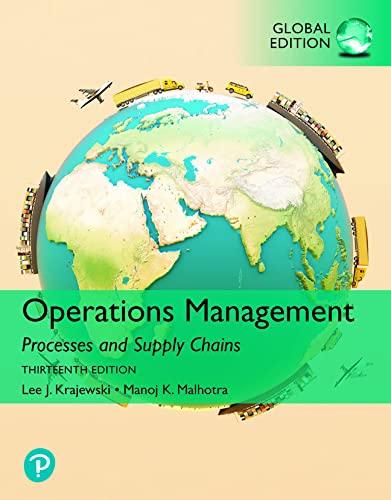Copper Kettle Catering (CKC) is a full-service catering company that provides services ranging from box lunches for
Question:
Copper Kettle Catering (CKC) is a full-service catering company that provides services ranging from box lunches for picnics or luncheon meetings to large wedding, dinner, or office parties. Established as a lunch delivery service for offices in 1972 by Wayne and Janet Williams, CKC has grown to be one of the largest catering businesses in Raleigh, North Carolina. The company divides customer demand into two categories: deliver only and deliver and serve. The deliver-only side of the business delivers boxed meals consisting of a sandwich, salad, dessert, and fruit. The menu for this service is limited to six sandwich selections, three salads or potato chips, and a brownie or fruit bar. Grapes and an orange slice are included with every meal, and iced tea can be ordered to accompany the meals. The overall level of demand for this service throughout the year is fairly constant, although the mix of menu items delivered varies. The planning horizon for this segment of the business is short: Customers usually call no more than a day ahead of time. CKC requires customers to call deliver-only orders in by 10:00 a.m. to guarantee delivery the same day. The deliver-and-serve side of the business focuses on catering large parties, dinners, and weddings. The extensive range of menu items includes a full selection of hors d'oeuvres, entrées, beverages, and special-request items. The demand for these services is much more seasonal, with heavier demands occurring in the late spring-early summer for weddings and the late fall-early winter for holiday parties. However, this segment also has a longer planning horizon. Customers book dates and choose menu items weeks or months ahead of time. CKC's food preparation facilities support both operations. The physical facilities layout resembles that of a job process. Five major work areas consist of a stove-oven area for hot food preparation, a cold area for salad preparation, an hors d'oeuvre preparation area, a sandwich preparation area, and an assembly area where deliver-only orders are boxed and deliver-and-serve orders are assembled and trayed. Three walk-in coolers store foods requiring refrigeration, and a large pantry houses nonperishable goods. Space limitations and the risk of spoilage limit the amount of raw materials and prepared food items that can be carried in inventory at any one time. CKC purchases desserts from outside vendors. Some deliver the desserts to CKC; others require CKC to send someone to pick up desserts at their facilities. The scheduling of orders is a two-stage process. Each Monday, Wayne and Janet develop the schedule of deliver-and-serve orders to be processed each day. CKC typically has multiple deliver-and-serve orders to fill each day of the week. This level of demand allows a certain efficiency in the preparation of multiple orders. The deliver-only orders are scheduled day to day, owing to the short-order lead times. CKC sometimes runs out of ingredients for deliver-only menu items because of the limited inventory space. Wayne and Janet have 10 full-time employees: two cooks and eight food preparation workers, who also work as servers for the deliver-and-serve orders. In periods of high demand, they hire additional part-time servers. The position of cook is specialized and requires a high degree of training and skill. The rest of the employees are flexible and move between tasks as needed. The business environment for catering is competitive. The competitive priorities are high-quality food, delivery reliability, flexibility, and cost-in that order. "The quality of the food and its preparation is paramount," states Wayne Williams. "Caterers with poor-quality food will not stay in business long." Quality is measured by both freshness and taste. Delivery reliability encompasses both on-time delivery and the time required to respond to customer orders (in effect, the order lead time). Flexibility focuses on both the range of catering requests that a company can satisfy and menu variety.
Recently, CKC began to notice that customers are demanding more menu flexibility and faster response times. Small specialty caterers who entered the market are targeting specific well-defined market segments. One example is a small caterer called Lunches-R-Us, which located a facility in the middle of a large office complex to serve the lunch trade and competes with CKC on cost. Wayne and Janet Williams are impressed by the lean systems concept, especially the ideas related to increasing flexibility, reducing lead times, and lowering costs. They sound like what CKC needs to remain competitive.
However, the Williamses wonder whether lean concepts and practices are transferable to a service business.
QUESTIONS
1. Are the operations of Copper Kettle Catering conducive to the application of lean concepts and practices? Explain.
2. What, if any, are the major barriers to implementing a lean system at Copper Kettle Catering?
3. What would you recommend that Wayne and Janet Williams do to take advantage of lean concepts in operating CKC?
Step by Step Answer:

Operations Management Processes And Supply Chains
ISBN: 9781292409863
13th Global Edition
Authors: Lee Krajewski, Naresh Malhotra, Larry Ritzman





